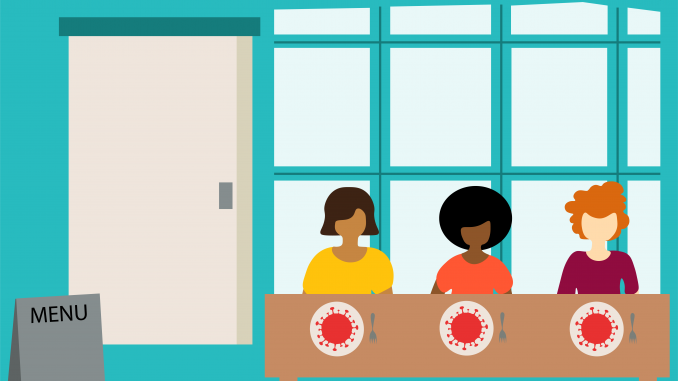
Indoor dining will resume in Philadelphia on Sept. 8 at a 25 percent capacity and only four diners at each table. Restaurants will also be required to arrange tables at least six feet apart or have an impermeable barrier between them, have employees wear masks and be screened before shifts, prohibit bar service, close kitchens by 11 p.m. and install physical barriers in kitchens, at cash registers and food pickup areas, according to an Aug. 20 announcement by the City of Philadelphia.
On March 16, Gov. Tom Wolf closed all “nonessential businesses,” which included indoor dining, in response to increasing COVID-19 case counts in Pennsylvania, the Philadelphia Inquirer reported. On June 12, outdoor dining was permitted at reduced capacity, Philly Voice reported. On July 15, restaurants were barred from serving alcohol unless accompanied by a meal, Penn Live reported.
The Philadelphia region is home to more than 6,000 restaurants, according to a 2019 report by the Philadelphia Department of Public Health and Get Well Philly, so permitting indoor dining after a six-month hiatus is vital for the survival of the city’s restaurant industry.
In spite of federal assistance programs, such as the CARES Act, Paycheck Protection Program and Economic Injury Disaster Loans, the restaurant industry lost $120 billion dollars nationwide only three months into the pandemic, ABC News reported.
People’s lives should not have a price tag — the City of Philadelphia must implement more financial relief programs for restaurants so that they do not need to put servers, hosts and diners at risk just to stay above water.
Philadelphia has a high risk of community transmission, according to the Philadelphia Department of Public Health. A study that is in pre-print and has yet to be peer reviewed found that coronavirus transmission indoors is nearly 20 times higher in comparison with outdoors, the Advisory Board Daily Briefing reported.
At least twenty-six restaurants in Philadelphia County closed between May 18 and Aug. 3, according to Eater Philadelphia, and more are sure to close in the upcoming months as cold weather inhibits outdoor dining and restaurants lose what little revenue they were gaining from this.
Lizzy Friedman, a 2020 neuroscience alumna, runs local food blog @lowermerionfoodie on Instagram and said indoor dining in the winter is a more feasible option.
“Personally, I don’t feel comfortable dining indoors at this time,” Friedman said. “Outdoors is fine, but indoors is a little risky for my liking.”
It’s been an uphill battle for restaurants, and while things are nowhere near normal, indoor dining is the closest thing to life before the pandemic.
Katerina Vassil, a senior public health major, has already dined indoors in Lancaster since it was permitted on June 26.
“I have been indoor dining for a good part of the summer at home, and there were ample social distancing measures in place, so I felt comfortable there and also feel comfortable here,” Vassil said.
Not everyone is so eager to eat indoors, however.
Ava Jancarski, a senior nursing major, agrees that the city is rushing to permit indoor dining before it is safe, and she will be taking a more cautious approach.
“It will take me a while to eat in an inclosed space comfortably with no mask,” Jancarski said.
No matter what precautions are put in place, COVID-19 cases are likely to spike. Therefore, I am not comfortable eating indoors quite yet, and I don’t think I will be doing it any time soon.
Restaurants should not be put into the position where they must choose between jeopardizing their business or endangering their staff and customers’ health. I will be sticking with takeout and delivery for now.


Be the first to comment